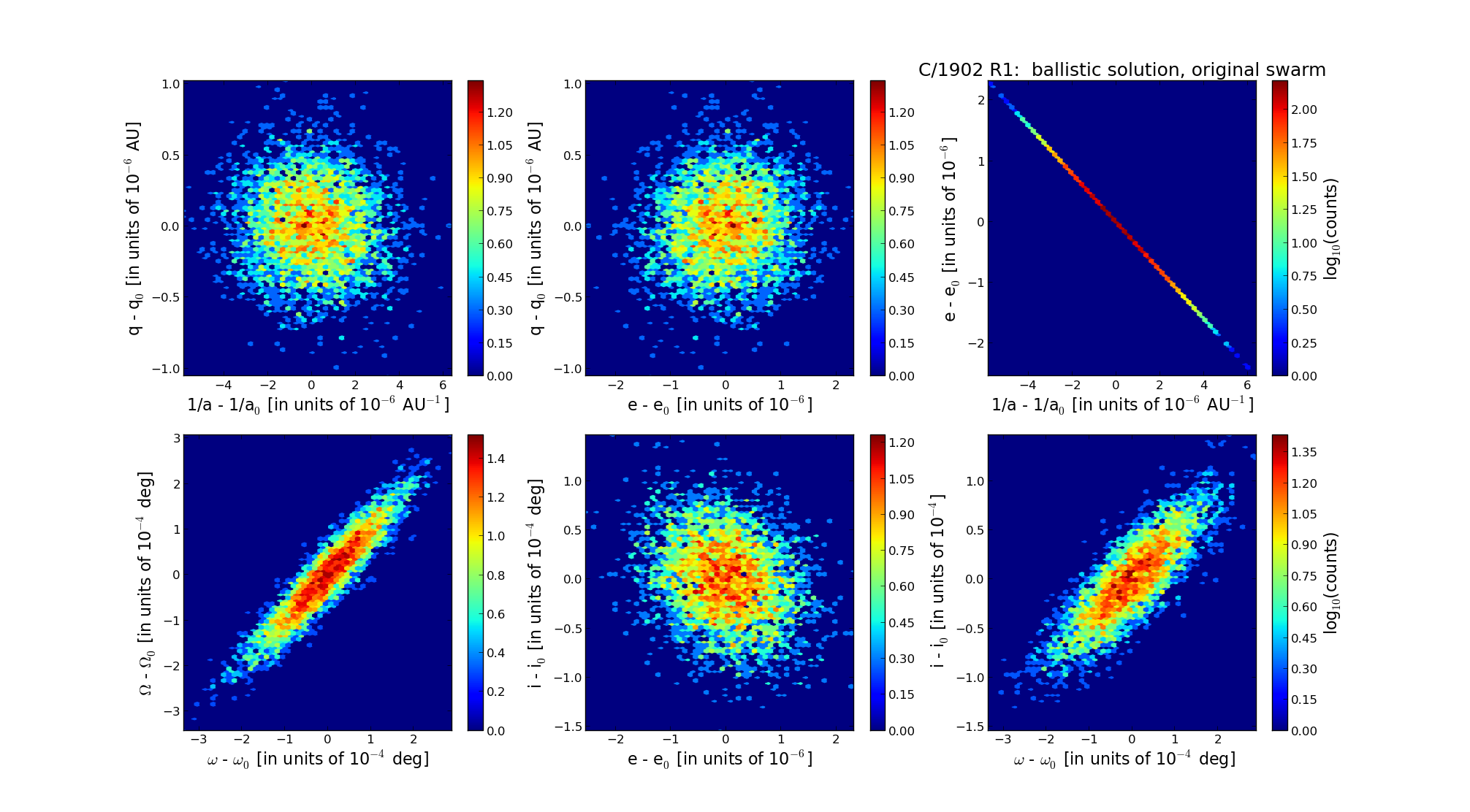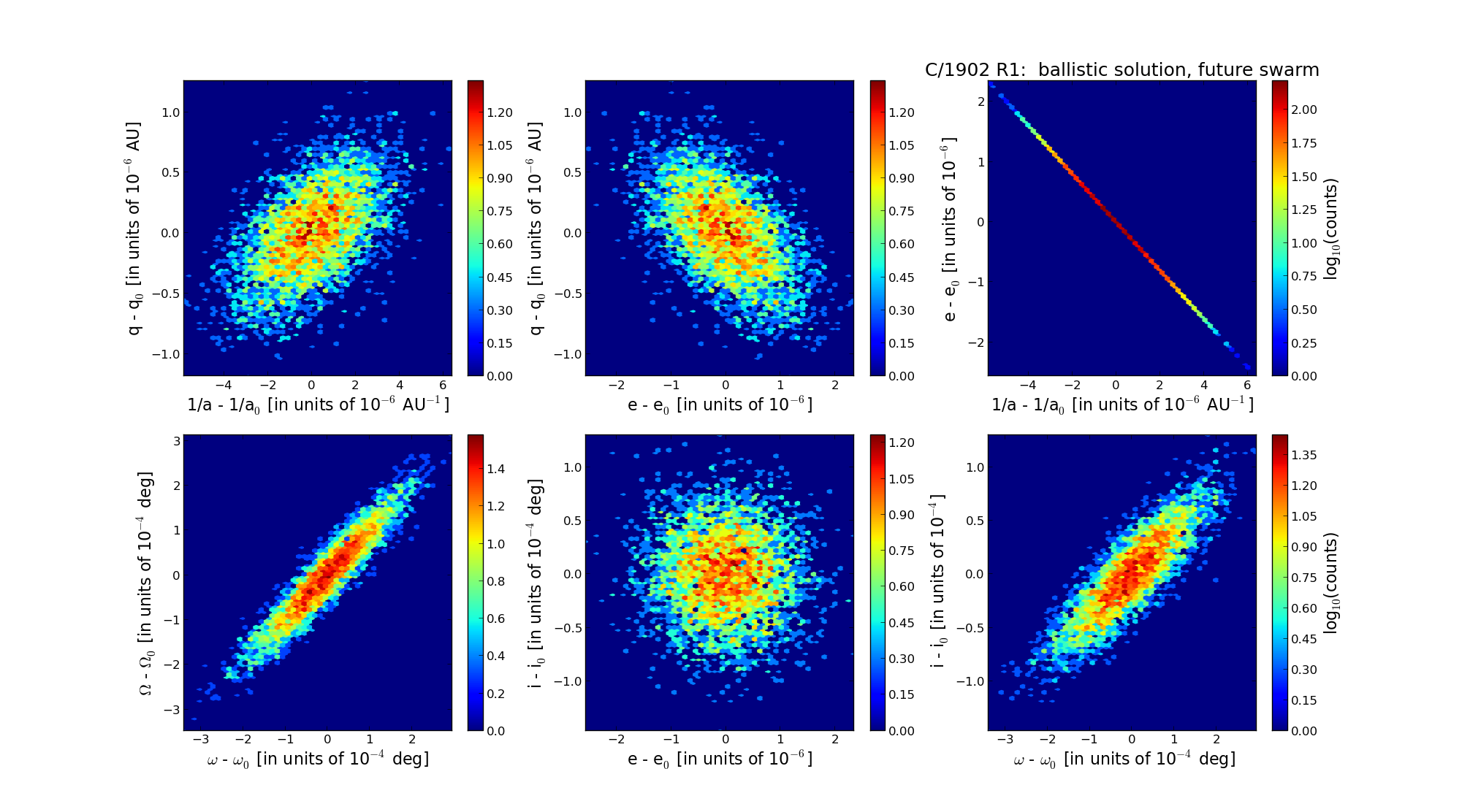| Solar System Dynamics & Planetology Group |
 |
C/1902 R1 Perrine |  |
| Solar System Dynamics & Planetology Group |
 |
C/1902 R1 Perrine |  |
| number of observations | 1491 |
| number of residuals | 2501 |
| data interval | 1902 Sep. 1 — 1903 Mar. 31 |
| rms [arcsec] | 2.28 |
| orbit quality class | 1b |
| Epoch (TT) | 19021127.0 | = JD 2416080.5 |
| time of perihelion passage (TT) | 19021124.356684 | ± 0.000025 |
| perihelion distance | 0.40107241 | ± 0.00000033 |
| eccentricity | 0.99996675 | ± 0.00000069 |
| argument of perihelion [deg] | 152.983569 | ± 0.000085 |
| longitude of the ascending node [deg] | 50.740193 | ± 0.000087 |
| inclination [deg] | 156.354721 | ± 0.000036 |
| inverse semimajor axis [10-6 au-1] | 82.90 | ± 1.71 |

| Epoch (TT) | 16050616 | |
| time of perihelion passage (TT) | 19021124.748046 | ± 0.000042 |
| perihelion distance | 0.39752997 | ± 0.00000028 |
| eccentricity | 0.99998766 | ± 0.00000067 |
| argument of perihelion [deg] | 152.968369 | ± 0.000084 |
| longitude of the ascending node [deg] | 50.636389 | ± 0.000087 |
| inclination [deg] | 156.486711 | ± 0.000040 |
| inverse semimajor axis [10-6 au-1] | 31.04 | ± 1.71 |

| Epoch (TT) | 22100426 | |
| time of perihelion passage (TT) | 19021124.008464 | ± 0.000019 |
| perihelion distance | 0.40184116 | ± 0.00000033 |
| eccentricity | 0.99965002 | ± 0.00000069 |
| argument of perihelion [deg] | 152.815403 | ± 0.000086 |
| longitude of the ascending node [deg] | 50.627736 | ± 0.000088 |
| inclination [deg] | 156.403506 | ± 0.000037 |
| inverse semimajor axis [10-6 au-1] | 870.94 | ± 1.71 |